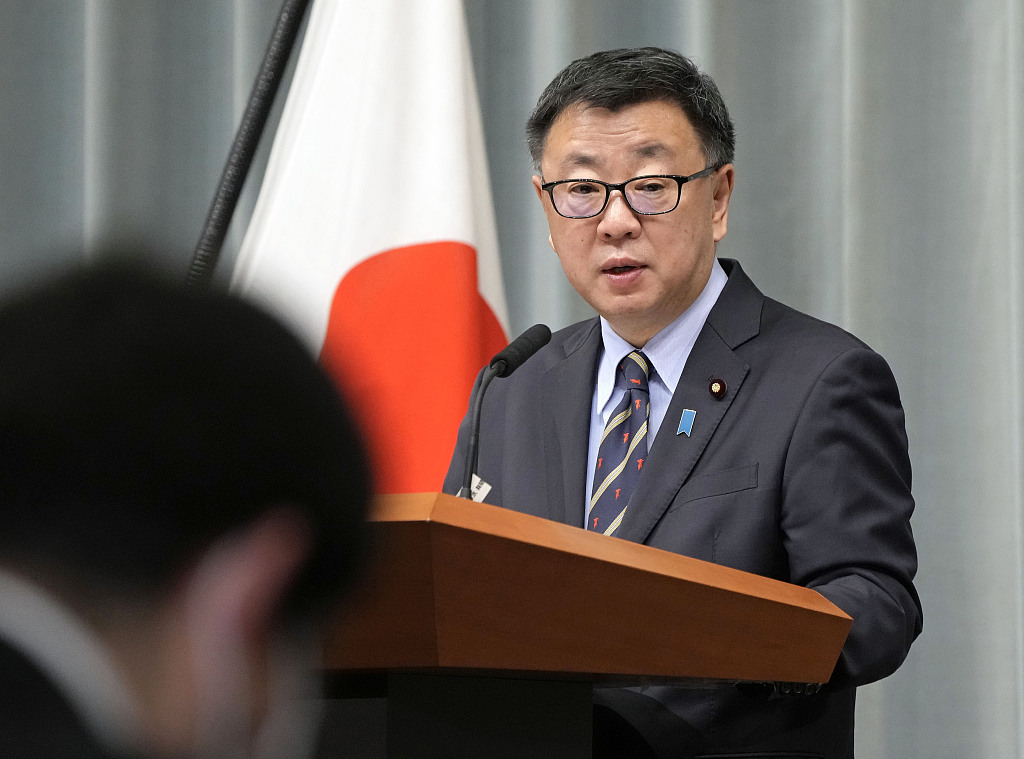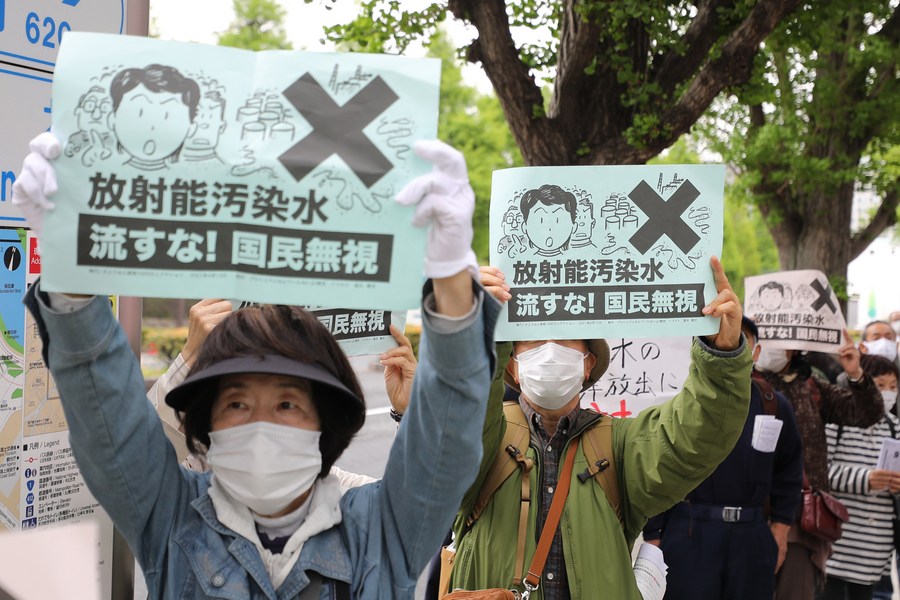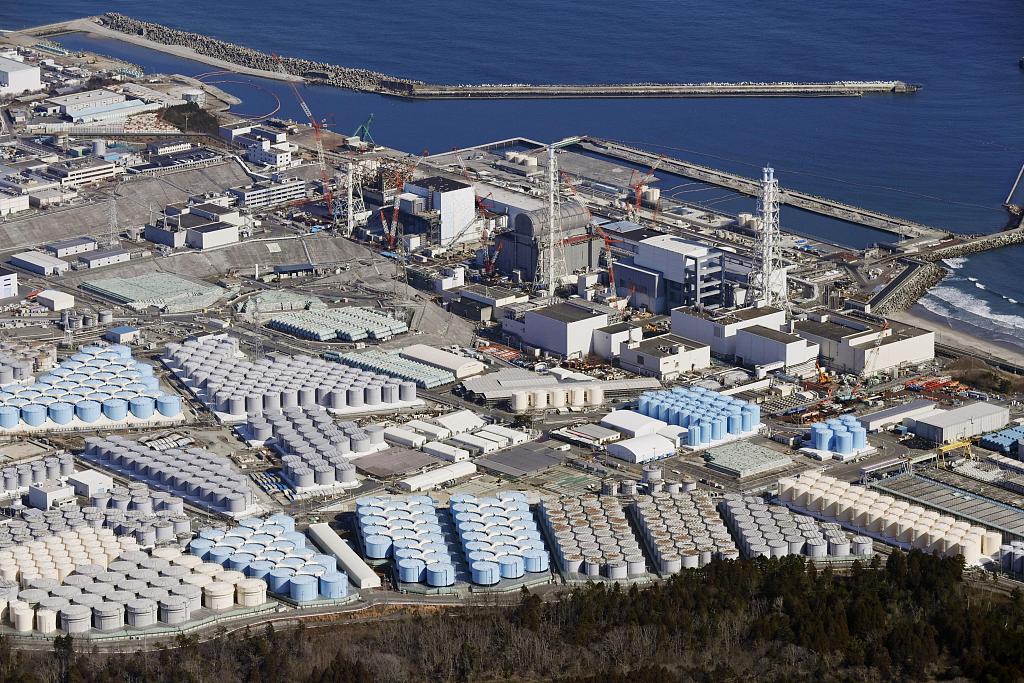
Japanese Chief Cabinet Secretary Hirokazu Matsuno attends a press conference at the prime minister's office in Tokyo on Jan. 18, 2022. /CFP
Japanese Chief Cabinet Secretary Hirokazu Matsuno attends a press conference at the prime minister's office in Tokyo on Jan. 18, 2022. /CFP
The Japanese government welcomes the International Atomic Energy Agency (IAEA)'s review on the safety of releasing contaminated water from the crippled Fukushima nuclear plant into the sea, Chief Cabinet Secretary Hirokazu Matsuno said on Monday, according to Reuters.
A group of experts from the organization is in Japan to evaluate the safety and radiation effects on humans and the sea of discharging the treated water, Matsuno said.
"The Japanese government will fully cooperate with the IAEA to ensure that Japan's efforts are properly evaluated," the top government spokesperson said.
The task force will conduct its survey in an "objective, credible and science-based manner and help send a message of transparency and confidence to the people in Japan and beyond, Gustavo Caruso, the head of the task force and director and coordinator at the IAEA's Department of Nuclear Safety and Security said at Monday's meeting with the Japanese government.

People rally to protest against the Japanese government's decision to discharge contaminated radioactive wastewater in Fukushima Prefecture into the sea in Tokyo, capital of Japan, April 13, 2021. /Xinhua
People rally to protest against the Japanese government's decision to discharge contaminated radioactive wastewater in Fukushima Prefecture into the sea in Tokyo, capital of Japan, April 13, 2021. /Xinhua
The task force is due to stay in Japan through Friday and on Tuesday is slated to conduct safety reviews at the plant that had its key cooling functions knocked out by a massive earthquake-triggered tsunami in 2011, causing multiple core meltdowns in what continues to be the worst nuclear catastrophe since the Chernobyl nuclear crisis in 1986.
The IAEA has said that the results of its survey will be made into a report by the end of the year, with a ministry official stating that the results will also be shown in the discharge plan's deliberation, which will be submitted by Japan's Nuclear Regulation Authority NRA from TEPCO.
Local and international opposition to the plan
Much to the chagrin of the international community, Japan unilaterally decided in April last year that it plans to release radioactive water that has accumulated at the crisis-hit plant into the Pacific Ocean. The toxic water, stored in tanks at the plant in Japan's northeast, is expected to soon reach capacity.
The tainted water the Japanese government plans to release into the Pacific Ocean contains radioactive tritium as a result of being used to cool down melted nuclear fuel at the plant in Fukushima Prefecture.

Tanks at the crippled Fukushima Daiichi nuclear power plant storing treated radioactive water from the plant in Japan, February 13, 2021. /CFP
Tanks at the crippled Fukushima Daiichi nuclear power plant storing treated radioactive water from the plant in Japan, February 13, 2021. /CFP
The government's plan is to release the radioactive water through a tunnel under the seabed into the Pacific Ocean roughly one kilometer away from the stricken plant. The controversial plan is proposed to begin in the spring of 2023, much to the consternation of local fisheries and the international community.
Japan's fisheries industry has voiced its ardent opposition to the plan, as it will almost certainly further damage the industry's reputation.
Moreover, some of Japan's closest neighbors have voiced strong concerns over the plan as have a number of worried countries from further afield.
Japan's government had been considering a number of feasible alternative plans other than its unilateral proposal to just dump radioactive water into the Pacific.
These options included injecting the toxic water deep into the ground, releasing it into the atmosphere after vaporizing it, or making it into a solid state and burying it underground.
(With input from agencies)

